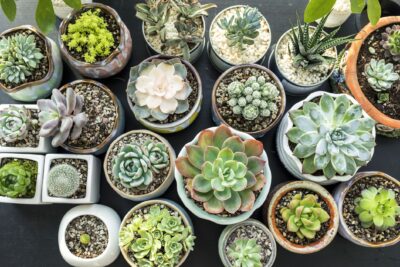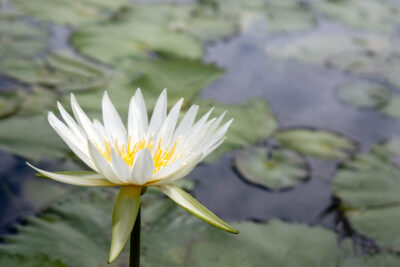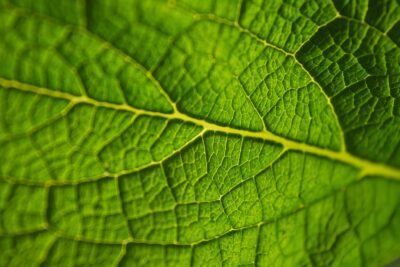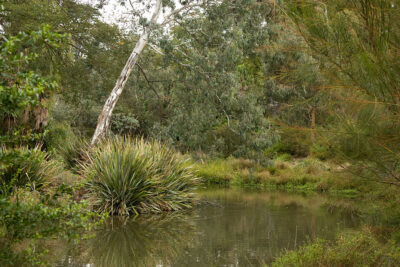
Discover the Enchanting Succulent Plant with Spotted Leaves

If you are a plant enthusiast or a lover of unique and beautiful foliage, then you are in for a treat. We will be exploring the world of succulent plants with spotted leaves. Succulents have gained immense popularity in recent years due to their low-maintenance nature and stunning appearance. And among the vast variety of succulents, those with spotted leaves have a special charm that can instantly catch your attention.
We will delve into the fascinating world of succulent plants with spotted leaves. We will discuss the different types of succulents that display this unique characteristic, explore the reasons behind their spotted appearance, and provide tips on how to care for them. Whether you are a seasoned succulent collector or just starting your journey, this article will provide you with valuable insights and inspiration to add these enchanting plants to your collection.
- The enchanting succulent plant with spotted leaves is called the Kalanchoe tomentosa
- It is commonly known as the Panda Plant or Chocolate Soldier
- The plant is native to Madagascar
- It is a low-maintenance plant that is suitable for both indoor and outdoor environments
- The spotted leaves of the Kalanchoe tomentosa add a unique and eye-catching touch to any garden or plant collection
- It requires well-draining soil and moderate sunlight to thrive
- Water the plant sparingly, allowing the soil to dry out between waterings
- The Panda Plant is drought-tolerant and can withstand periods of neglect
- It is a slow-growing plant that can reach a height of about 1-2 feet
- Propagate the succulent by taking stem or leaf cuttings
- The Kalanchoe tomentosa produces small, tubular flowers in shades of yellow or orange
- This succulent is not toxic to pets, but it is always best to keep plants out of reach
- Enjoy the beauty of the enchanting succulent plant with spotted leaves in your home or garden
- Frequently Asked Questions
The enchanting succulent plant with spotted leaves is called the Kalanchoe tomentosa
The Kalanchoe tomentosa, also known as the Panda Plant or the Chocolate Soldier, is a mesmerizing succulent plant that captivates with its unique spotted leaves. Native to Madagascar, this enchanting plant is a popular choice among succulent enthusiasts and collectors.
The Kalanchoe tomentosa features thick, fuzzy leaves that are covered in tiny, velvety hairs. These hairs give the leaves a soft and fuzzy texture, making them irresistible to touch. The leaves are a vibrant green color, adorned with distinctive markings that resemble spots or stripes. These markings can vary in color, ranging from white or cream to brown or reddish-brown, adding to the plant's visual appeal.
This succulent plant has a compact and bushy growth habit, with the leaves growing in a rosette formation. The leaves are spoon-shaped and slightly rounded at the tips, giving them a charming appearance. The plant can reach a height of about 6 to 12 inches, making it a great choice for small indoor spaces or as part of a succulent arrangement.
Caring for the Kalanchoe tomentosa
The Kalanchoe tomentosa is relatively easy to care for, making it a suitable plant for both beginners and experienced succulent enthusiasts. Here are some essential care tips to keep your Kalanchoe tomentosa thriving:
 Identifying a Succulent Plant with Scalloped Leaf Edges
Identifying a Succulent Plant with Scalloped Leaf Edges- Light: Place your Panda Plant in bright, indirect sunlight. It can tolerate some direct sunlight, but too much can lead to leaf burn.
- Watering: Allow the soil to dry out between waterings. Overwatering can lead to root rot, so it's best to err on the side of underwatering.
- Soil: Plant your Kalanchoe tomentosa in well-draining soil, such as a mix of cactus soil and perlite or pumice.
- Temperature: This plant prefers temperatures between 60°F and 75°F (15°C to 24°C). Protect it from extreme cold or hot temperatures.
- Fertilizer: Feed your Panda Plant with a balanced, water-soluble fertilizer diluted to half-strength during the growing season (spring and summer).
With proper care, the Kalanchoe tomentosa can reward you with its stunning spotted leaves, adding a touch of enchantment to your indoor or outdoor succulent collection.
It is commonly known as the Panda Plant or Chocolate Soldier
The Panda Plant, also known as the Chocolate Soldier, is a fascinating succulent plant that captures attention with its unique spotted leaves. This enchanting plant belongs to the Kalanchoe tomentosa species and is native to Madagascar.
The Panda Plant gets its name from the soft, fuzzy, and silvery hairs that cover its leaves, resembling the fur of a panda. These hairs serve as a protective layer, helping the plant retain moisture in its arid natural habitat.
One of the most striking features of the Panda Plant is its spotted leaves. The dark brown spots, often referred to as "chocolate spots," contrast beautifully against the light green or grayish-green background, adding a touch of elegance to its appearance.
This succulent plant has a compact and bushy growth habit, with the leaves growing in a rosette pattern. Each leaf is thick and fleshy, storing water for the plant during dry periods. The edges of the leaves are slightly toothed, giving them a unique texture.
The Panda Plant is relatively easy to care for, making it a popular choice among succulent enthusiasts. It thrives in bright, indirect sunlight and prefers well-draining soil. Overwatering should be avoided, as it can lead to root rot. Instead, it is recommended to water the plant when the top inch of soil feels dry.
As a low-maintenance plant, the Panda Plant can tolerate periods of neglect and is known for its resilience. It is a great addition to indoor gardens, as it can survive in dry and warm conditions commonly found indoors.
 Where to Find Succulents That Resemble Jelly Beans: A Guide to Buying
Where to Find Succulents That Resemble Jelly Beans: A Guide to BuyingIn addition to its visual appeal, the Panda Plant also offers air purification benefits. Like other succulent plants, it releases oxygen and absorbs carbon dioxide during photosynthesis, improving the air quality in your living space.
If you're looking to add a touch of charm to your succulent collection, the Panda Plant with its spotted leaves is an excellent choice. Its easy care requirements and unique appearance make it a delightful addition to any home or garden.
The plant is native to Madagascar
Madagascar, the fourth largest island in the world, is home to a myriad of unique and fascinating plant species. One such plant is the enchanting succulent with spotted leaves. This extraordinary plant is exclusively found in the diverse and captivating landscapes of Madagascar.
The succulent plant, scientifically known as Euphorbia decaryi, belongs to the Euphorbiaceae family. It thrives in the arid regions of Madagascar, where it has adapted to survive in the harsh conditions of its natural habitat.
The spotted leaves of this succulent are a distinguishing feature that sets it apart from other plants. The leaves are thick and fleshy, designed to store water during the dry seasons, allowing the plant to withstand prolonged periods of drought.
The spots on the leaves of the succulent are not mere blemishes; they serve a vital purpose. These spots act as a protective mechanism, shielding the plant from excessive sunlight. The spots absorb sunlight and reduce the amount of direct light reaching the plant's surface, preventing damage and ensuring its survival.
 Discover Popular Succulent Plant Names and Access Stunning Pictures
Discover Popular Succulent Plant Names and Access Stunning PicturesDue to its unique appearance and intriguing adaptations, the spotted succulent has gained popularity among plant enthusiasts and collectors around the world. Its distinct beauty and ability to thrive in various climates make it a sought-after addition to any plant collection.
It is a low-maintenance plant that is suitable for both indoor and outdoor environments
If you're looking for a plant that adds a touch of charm and elegance to your space without requiring much effort, look no further than the enchanting succulent plant with spotted leaves. These remarkable plants are not only visually appealing but also incredibly easy to care for, making them a popular choice for both beginner and experienced gardeners.
Whether you have a busy lifestyle or a limited green thumb, the succulent plant with spotted leaves is the perfect addition to your home or garden. Its ability to thrive in various environments, including both indoors and outdoors, makes it a versatile choice that suits almost any setting.
One of the standout features of this succulent plant is its unique and eye-catching spotted leaves. These spots can vary in color, ranging from vibrant reds and oranges to deep purples and rich greens. The contrasting spots against the plant's fleshy leaves create a captivating and visually appealing display that is sure to draw attention.
But the beauty of this plant doesn't end with its striking appearance. The succulent plant with spotted leaves is known for its low-maintenance nature, making it an ideal choice for those who may not have the time or expertise to care for high-maintenance plants.
Here are some reasons why the succulent plant with spotted leaves is so low-maintenance:
- Drought Tolerance: Succulents are well-known for their ability to store water in their leaves, which allows them to survive in dry conditions. This means you won't have to worry about watering them frequently.
- Minimal Watering: Unlike many other plants, succulents prefer infrequent but deep watering. They can withstand periods of drought, so you only need to water them when the soil is completely dry.
- Tolerant to Different Light Levels: Succulents, including the plant with spotted leaves, can tolerate a wide range of light levels. They can thrive in both bright, direct sunlight and low-light conditions, making them adaptable to various indoor environments.
- Resilience: Succulents are known for their ability to bounce back from neglect or minor mishaps. Even if you forget to water them for a while or accidentally overwater them, they are likely to recover quickly.
With these qualities, the succulent plant with spotted leaves is a hassle-free addition to your plant collection. Whether you place it on a sunny windowsill, in a trendy terrarium, or as part of an outdoor landscape, this plant is sure to bring a touch of enchantment and beauty to your space.
 Common Succulents: Identifying the Most Popular Varieties
Common Succulents: Identifying the Most Popular VarietiesThe spotted leaves of the Kalanchoe tomentosa add a unique and eye-catching touch to any garden or plant collection
The Kalanchoe tomentosa, also known as the Panda Plant or Pussy Ears, is a mesmerizing succulent that is beloved by plant enthusiasts for its distinctive spotted leaves. Native to Madagascar, this enchanting plant is a member of the Crassulaceae family.
The most striking feature of the Kalanchoe tomentosa is its velvety leaves, which are covered in small, soft hairs that give them a fuzzy texture. These hairs also contribute to the plant's unique spotted appearance. The spots can vary in color, ranging from deep brown to rusty red or even chocolate black, creating a visually captivating pattern on the leaves.
Why Choose the Kalanchoe tomentosa?
There are several reasons why the Kalanchoe tomentosa is a great addition to any garden or plant collection:
- Low Maintenance: Succulents, in general, are known for their ability to thrive in dry conditions with minimal care, and the Kalanchoe tomentosa is no exception. It requires infrequent watering and can withstand periods of drought.
- Unique Aesthetic: The spotted leaves of the Kalanchoe tomentosa make it stand out among other succulents. Its fuzzy texture adds a touch of whimsy and softness to its overall appearance.
- Indoor or Outdoor Versatility: The Kalanchoe tomentosa can be grown both indoors and outdoors, making it a versatile choice for any plant lover. It thrives in bright, indirect light but can also tolerate lower light conditions.
- Air-Purifying Qualities: Like many other succulents, the Kalanchoe tomentosa is known for its air-purifying properties. It helps remove toxins from the air, making it a beneficial plant for indoor spaces.
Whether you are a seasoned gardener or a beginner plant enthusiast, the Kalanchoe tomentosa is sure to captivate you with its spotted leaves and easy care requirements. Consider adding this enchanting succulent to your collection and enjoy the unique touch it brings to your garden or indoor space.
It requires well-draining soil and moderate sunlight to thrive
Succulent plants are known for their unique and captivating features. One particular succulent that stands out among the rest is the enchanting succulent plant with spotted leaves. This mesmerizing plant has gained popularity among both novice and experienced gardeners due to its stunning appearance.
To ensure the healthy growth of the succulent with spotted leaves, it is essential to provide it with well-draining soil. Succulents are prone to root rot if they are constantly sitting in waterlogged soil. Therefore, using a well-draining soil mix is crucial to prevent any excess moisture from accumulating around the roots.
 Unveiling Vera Higgins: Discovering Her Succulent Secrets
Unveiling Vera Higgins: Discovering Her Succulent SecretsIn addition to well-draining soil, moderate sunlight is key for the thriving of this succulent. While succulents generally enjoy bright light, direct intense sunlight for prolonged periods can cause sunburn and damage the plant. Placing it in a spot where it receives a few hours of indirect sunlight and partial shade throughout the day is ideal.
Water the plant sparingly, allowing the soil to dry out between waterings
When it comes to succulent plants, the Spotted Leaf variety is truly enchanting. With its unique and eye-catching patterned leaves, it is a favorite among plant enthusiasts. The Spotted Leaf succulent, scientifically known as Echeveria macdougallii, is native to Mexico and is part of the Crassulaceae family.
One of the key things to keep in mind when caring for the Spotted Leaf succulent is to water it sparingly. These plants have adapted to survive in arid conditions, so they have excellent water retention capabilities. Allow the soil to dry out completely between waterings, as overwatering can lead to root rot and other issues.
Light Requirements
Like most succulents, the Spotted Leaf plant thrives in bright, indirect light. Place it near a window or in a well-lit area of your home to ensure it receives enough sunlight. However, direct sunlight can scorch the leaves, so it's best to provide some shade during the hottest part of the day.
Soil and Potting
When it comes to soil, the Spotted Leaf succulent prefers well-draining soil that allows excess water to flow through easily. A cactus or succulent mix is ideal for this plant. Additionally, make sure to choose a pot with drainage holes to prevent water from pooling at the bottom, which can lead to root rot.
Fertilizing
Fertilizing the Spotted Leaf succulent is not necessary, but if you want to give it an extra boost, you can use a diluted succulent fertilizer during the growing season. Apply the fertilizer sparingly, following the instructions on the packaging, as overfertilizing can harm the plant.
 Identifying the Trailing Succulent: Which Species is it?
Identifying the Trailing Succulent: Which Species is it?Propagation
If you wish to propagate your Spotted Leaf succulent, you can do so through leaf cuttings or offsets. Gently remove a healthy leaf from the plant and allow it to callus over for a few days. Then, place the leaf in a well-draining soil mix and mist it occasionally. Over time, roots will develop, and a new plant will emerge.
Common Issues
The Spotted Leaf succulent is generally a hardy plant, but it can still face a few problems. Overwatering can cause root rot, while underwatering can lead to shriveled leaves. Keep an eye out for pests such as mealybugs and aphids, which can be treated with insecticidal soap or neem oil.
The Spotted Leaf succulent is a captivating plant that is relatively easy to care for. By providing it with the right conditions – well-draining soil, bright indirect light, and sparing waterings – you can enjoy its stunning spotted leaves for years to come.
The Panda Plant is drought-tolerant and can withstand periods of neglect
The Panda Plant, scientifically known as Kalanchoe tomentosa, is a mesmerizing succulent plant that captivates with its unique appearance and resilience. Native to Madagascar, this drought-tolerant beauty belongs to the Crassulaceae family and is commonly referred to as the "Panda Plant" due to its striking resemblance to the adorable black and white bear.
One of the most remarkable features of the Panda Plant is its ability to thrive in arid conditions. This succulent has adapted to survive in its natural habitat where water is scarce, making it an excellent choice for those who tend to forget to water their plants frequently. Its fleshy leaves store water, allowing it to withstand prolonged periods of neglect without showing signs of distress.
Distinctive Spotted Leaves
The enchanting leaves of the Panda Plant are the highlight of its charm. Each leaf is covered in soft white hairs, giving it a velvety texture that adds to its appeal. The edges of the leaves are adorned with small, brownish-red spots, which are reminiscent of the markings found on a panda's fur. These spots create a captivating contrast against the light green background, making the Panda Plant a visually stunning addition to any indoor or outdoor space.
 Understanding Succulent Leaf Texture: Soft and Wrinkly Leaves
Understanding Succulent Leaf Texture: Soft and Wrinkly LeavesFurthermore, the leaves of the Panda Plant grow in a rosette formation, creating a delightful symmetry that adds to its overall allure. The rosette shape allows the plant to efficiently absorb sunlight, essential for its growth and survival.
Easy Care and Versatility
The Panda Plant is an ideal choice for both novice and experienced gardeners due to its low maintenance requirements. It thrives in well-draining soil and prefers bright, indirect sunlight. While it can tolerate some direct sunlight, it is important to avoid exposing it to intense rays for extended periods as this can lead to sunburn on its delicate leaves.
This succulent can be grown both indoors and outdoors, making it a versatile option for plant enthusiasts. When grown indoors, it adds a touch of greenery to any space and can be placed on windowsills, desks, or even as part of a succulent arrangement. Outdoors, the Panda Plant can be a wonderful addition to rock gardens, xeriscapes, or planted in containers on patios or balconies.
The Panda Plant is a captivating succulent with its distinctive spotted leaves and resilience. Its ability to tolerate drought and neglect makes it a perfect choice for busy individuals or those new to plant care. With its easy care requirements and versatility, this enchanting plant is sure to add beauty and charm to any indoor or outdoor setting.
It is a slow-growing plant that can reach a height of about 1-2 feet
Succulents are a popular choice for plant enthusiasts due to their unique appearance and low maintenance requirements. One particularly enchanting succulent plant that has been gaining attention is the one with spotted leaves.
Characterized by its slow growth, this succulent can reach a height of about 1-2 feet. Its compact size makes it a perfect addition to small gardens, indoor spaces, or even as a desktop plant.
The most striking feature of this succulent plant is its leaves. They are adorned with mesmerizing spots or patterns, which can vary in color and shape. These spots can be in shades of green, yellow, red, or even purple, adding an alluring touch to the plant.
 Cacti vs. Succulents: Understanding the Key Differences
Cacti vs. Succulents: Understanding the Key DifferencesNot only are the spotted leaves visually appealing, but they also serve a functional purpose. The spots on the leaves are actually specialized cells that store water, enabling the succulent to survive in arid conditions. This adaptation allows the plant to thrive with minimal watering, making it an excellent choice for those who tend to forget about their plants.
When it comes to care, this succulent plant is relatively low-maintenance. It requires well-draining soil to prevent root rot, as succulents are susceptible to overwatering. Additionally, it thrives in bright but indirect sunlight, making it a versatile choice for various lighting conditions.
Propagation of this succulent can be done through leaf cuttings or offsets. With proper care and attention, these cuttings can develop roots and grow into new plants, allowing you to expand your collection or share the beauty of this enchanting succulent with others.
The succulent plant with spotted leaves is a captivating addition to any plant lover's collection. Its slow growth, striking appearance, and ability to thrive in various conditions make it a delightful choice for both indoor and outdoor spaces. Whether you are a seasoned plant enthusiast or just starting your green journey, this succulent is sure to bring a touch of enchantment to your surroundings.
Propagate the succulent by taking stem or leaf cuttings
If you want to expand your succulent collection, propagating them through stem or leaf cuttings is a great way to do it. Not only is it a fun and rewarding process, but it also allows you to share these enchanting plants with friends and family.
To start propagating your succulent, you'll need to gather a few supplies:
- Sharp, clean scissors or pruning shears
- A clean, well-draining potting mix
- Small pots or containers
- A spray bottle filled with water
Once you have everything ready, follow these simple steps:
 Exploring the Origins of Succulents: Unveiling their Native Habitats
Exploring the Origins of Succulents: Unveiling their Native Habitats1. Choose a healthy stem or leaf
Look for a succulent stem or leaf that is plump and firm, without any signs of damage or disease. This will ensure a higher success rate when propagating.
2. Prepare the cutting
If you're propagating through stem cuttings, use your clean scissors or pruning shears to make a clean cut just below a node (where the leaf joins the stem). Make sure the cutting is at least a few inches long.
For leaf cuttings, gently twist or cut off a healthy leaf from the main plant. Be careful to keep the leaf intact without tearing it.
3. Let the cutting dry
Place the stem or leaf cutting in a dry, shady area and let it dry for a few days. This step allows the cut end to callous over, which helps prevent rotting when it's planted.
4. Prepare the potting mix and container
In a small pot or container, fill it with a well-draining potting mix. Succulents thrive in soil that allows excess water to drain quickly to prevent root rot.
5. Plant the cutting
For stem cuttings, make a small hole in the potting mix using your finger or a pencil. Gently insert the cut end of the stem into the hole, making sure it is firmly in place.
For leaf cuttings, place the leaf on top of the potting mix, burying the base of the leaf slightly into the soil. Ensure that the cut end is in contact with the potting mix.
 Are Air Plants Succulents? Exploring Tillandsia Classification
Are Air Plants Succulents? Exploring Tillandsia Classification6. Mist the cutting
Using a spray bottle filled with water, lightly mist the cutting to provide some moisture. Be careful not to overwater, as succulents are susceptible to root rot.
7. Find the perfect spot
Place your newly planted cuttings in a bright area with indirect sunlight. Avoid exposing them to harsh, direct sunlight, as it can scorch the delicate cuttings.
8. Wait and watch
Now, all that's left to do is wait and watch as your succulent cuttings take root and start growing. Be patient, as it may take several weeks for roots to form and new growth to emerge.
Remember to monitor the moisture level of the potting mix and adjust watering accordingly. Over time, you'll have a collection of beautiful succulents with their unique spotted leaves to admire and enjoy!
The Kalanchoe tomentosa produces small, tubular flowers in shades of yellow or orange
The Kalanchoe tomentosa, also known as the Panda Plant or Chocolate Soldier, is a delightful succulent plant that is sure to capture your heart. With its unique spotted leaves and charming appearance, it has gained popularity among plant enthusiasts around the world.
This enchanting succulent hails from Madagascar and belongs to the Crassulaceae family. Its leaves are the star of the show, covered in soft, velvety hair and adorned with eye-catching spots. The spots can vary in color, ranging from a deep chocolate brown to a rich burgundy hue, adding to its allure.
One of the fascinating features of the Kalanchoe tomentosa is its ability to change color based on its environment. When exposed to direct sunlight, the leaves tend to take on a more vibrant, reddish tint. In contrast, if kept in partial shade, the leaves may appear greener.
The Panda Plant is a relatively small succulent, typically growing up to 6 inches in height. Its compact size makes it an ideal choice for indoor gardens and terrariums. Additionally, it is a relatively low-maintenance plant, making it perfect for beginners or busy plant lovers.
Caring for the Kalanchoe tomentosa
If you're considering adding a Kalanchoe tomentosa to your plant collection, here are some care tips to keep in mind:
- Light: The Panda Plant thrives in bright, indirect light. It's important to avoid exposing it to harsh, direct sunlight for extended periods as it can lead to leaf burn.
- Temperature: This succulent prefers moderate temperatures between 60-75°F (15-24°C). It is sensitive to frost, so be sure to protect it during colder months.
- Watering: Allow the soil to dry out between waterings. Overwatering can cause root rot, so it's best to err on the side of underwatering with this plant.
- Soil: Provide well-draining soil to prevent waterlogging, as succulents are susceptible to root rot in overly moist conditions.
- Fertilizer: Feed the Panda Plant with a balanced, diluted fertilizer during the growing season (spring and summer) to promote healthy growth.
- Propagation: You can propagate the Kalanchoe tomentosa by taking stem or leaf cuttings. Allow the cuttings to callous over before planting them in well-draining soil.
By following these care guidelines, you'll be able to enjoy the beauty of the Kalanchoe tomentosa for years to come. So why not bring a touch of enchantment into your home with this delightful succulent?
This succulent is not toxic to pets, but it is always best to keep plants out of reach
If you're a pet owner and also a plant lover, you may constantly find yourself worrying about whether the plants in your home are safe for your furry friends. Luckily, when it comes to the succulent plant with spotted leaves, you can breathe a sigh of relief. This enchanting plant is not toxic to pets, making it a great addition to your indoor or outdoor garden. However, it is always best to take precautions and keep all plants out of your pets' reach to avoid any potential accidents.
Enjoy the beauty of the enchanting succulent plant with spotted leaves in your home or garden
Succulent plants have become increasingly popular among gardening enthusiasts due to their unique and captivating features. One particular succulent that stands out is the plant with spotted leaves. With its mesmerizing patterns and vibrant colors, it adds a touch of elegance and charm to any space.
Commonly known as the spotted succulent, this plant belongs to the Euphorbia family and is native to arid regions. Its distinctive feature lies in its leaves, which are adorned with eye-catching spots or speckles. These spots can vary in color, ranging from shades of green to red, pink, or even purple.
Why the spotted succulent is a must-have
If you're looking to enhance the aesthetic appeal of your garden or liven up your indoor space, the spotted succulent should be on your wishlist. Here's why:
- Unique patterns: The intricate patterns on the leaves of the spotted succulent make it a striking addition to any collection. Each plant has its own individual pattern, ensuring that no two are alike.
- Low maintenance: Like other succulents, the spotted variety is known for its ability to thrive in dry environments. It requires minimal watering and can tolerate neglect, making it an ideal choice for busy individuals or those new to gardening.
- Adaptability: Spotted succulents can adapt well to various conditions, including both indoor and outdoor environments. They can survive in bright sunlight as well as partial shade, making them versatile plants that can be placed in different areas of your home or garden.
Caring for your spotted succulent
Providing the right care is crucial to ensure that your spotted succulent thrives. Here are some essential tips for keeping your plant healthy:
- Sunlight: Place your succulent in a location where it can receive bright, indirect sunlight for a few hours each day.
- Watering: Water your plant sparingly, allowing the soil to dry out completely between waterings. Overwatering can be detrimental to succulents.
- Well-draining soil: Use a well-draining soil mix specifically formulated for succulents. This will prevent water from pooling around the roots and causing root rot.
- Temperature: Spotted succulents prefer temperatures between 60°F (15°C) and 80°F (27°C). Avoid exposing them to extreme cold or heat.
With proper care and attention, your spotted succulent will continue to enchant you with its stunning foliage for years to come. So go ahead, add this captivating plant to your collection and enjoy the beauty it brings to your home or garden.
Frequently Asked Questions
1. What is the name of the succulent plant with spotted leaves?
The succulent plant with spotted leaves is commonly known as the Kalanchoe tomentosa, or more popularly as the "Panda Plant."
2. How often should I water a Panda Plant?
Panda Plants are drought-tolerant and should be watered sparingly. It is recommended to water them every 2-3 weeks, allowing the soil to dry out completely between waterings.
3. How much sunlight does a Panda Plant require?
Panda Plants thrive in bright, indirect sunlight. They should be placed near a window or in a location where they can receive 4-6 hours of indirect sunlight per day.
4. How can I propagate a Panda Plant?
Panda Plants can be easily propagated through leaf or stem cuttings. Simply remove a healthy leaf or stem, let it dry for a few days, and then plant it in well-draining soil. Keep the soil slightly moist until new roots and growth appear.
If you want to read more articles similar to Discover the Enchanting Succulent Plant with Spotted Leaves, you can visit the Identification category.






You Must Read